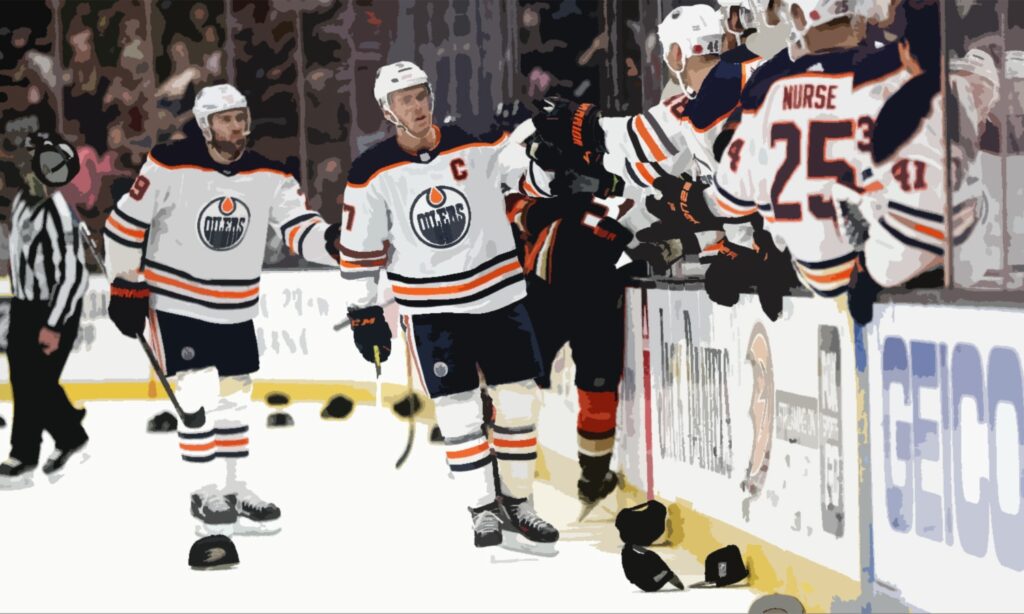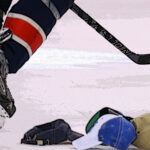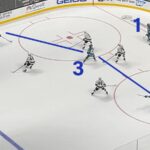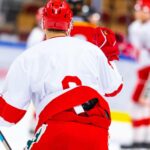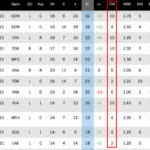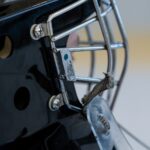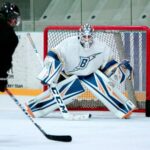A hat trick is when a player scores 3 goals in a hockey game. The goals can be scored during regulation or overtime, on a penalty shot – any which way, except in a shootout.
If you didn’t know what a hat trick was, now you know. If you want to know why they call it a hat trick, check out my blog post here.
But you came here because you came across a more specific term - natural hat trick.
What is a natural hat trick?
A natural hat trick is when a player scores 3 consecutive goals in a game, uninterrupted by a teammate or opponent. The feat is recognized regardless if the goals were scored within the same period or across several, excluding goals in the shootout. The NHL record for the quickest hat trick is 21 seconds, set by Bill Mosienko (Chicago Blackhawks) in the 1951-52 season.
Mosienko registered the hat trick against the New York Rangers at Madison Square Garden on March 23, 1952. His victim was Rangers’ goaltender Lorne Anderson, who allowed all three goals against in the 3rd period.
What percentage of hat tricks are natural?
Based on the last five seasons, dating back to 2016-17, 13.6% of all hat tricks were natural.
In total, there were 338 hat tricks registered in the regular season, and 46 of those were natural hat tricks.
That amounts to 9+ natural hat tricks each season, on average.
Just to be clear, I’ve scoured the internet and couldn't find any historical data related to natural hat tricks.
Not even the NHL shares this stat on their website. To their credit though, they provide data on players scoring 3 or more goals in a game. (source)
In the end, I crossed reference the 3+ goal list to game summary sheets and retrieved the data on natural hat tricks.
Below is the result of my search.
Natural Hat Tricks from 2016-2021

Natural Hat Tricks by NHL Defensemen
You’ll notice that not many defensemen make it on the list. Over those last 5 seasons, only two were defensemen: Jared Spurgeon and Justin Faulk.
In fact, if you go all the way back to 1917 (the NHL’s inaugural season), only 12 defensemen ever managed to score a natural hat trick (source). Al MacInnis managed the feat twice!
This total includes regular season and playoffs.
List of NHL Defensemen with Natural Hat Tricks
| Player Name | Team | Date | |
|---|---|---|---|
| 1 | Jared Spurgeon | Minnesota Wild | Feb 21, 2020 |
| 2 | Justin Faulk | Carolina Hurricanes | Feb 13, 2018 |
| 3 | Dustin Byfuglien | Chicago Blackhawks | Nov 30, 2007 |
| 4 | Al MacInnis | St. Louis Blues | Oct 12, 1998 |
| 5 | Al MacInnis | St. Louis Blues | Dec 11, 1996 |
| 6 | Bryan Fogarty | Quebec Nordiques | Dec 1, 1990 |
| 7 | Paul Reinhart | Calgary Flames | Nov 24, 1986 |
| 8 | Reijo Ruotsalainen | New York Rangers | Mar 17, 1982 |
| 9 | John Van Boxmeer | Buffalo Sabres | Nov 7, 1981 |
| 10 | Denis Potvin | New York Islanders | Oct 14, 1978 |
| 11 | Dick Redmond | Chicago Blackhawks | Apr 4, 1973* |
| 12 | Brad Park | New York Rangers | Dec 12, 1971 |
| 13 | Bert Corbeau | Montreal Canadiens | Dec 24, 1919 |
Only once has a defenseman managed to score 3 consecutive goals in the playoffs. As can observed from the defensemen list, that honor goes to Dick Redmond of the Chicago Blackhawks.
In his Stanley Cup Playoffs debut, Redmond scored a natural hat trick against the St. Louis Blues in a 7-1 victory. He scored twice in the first period and the other in the second.
Natural Hat Trick Debate
There are two situations in which a natural hat trick would come into question.
One, we already covered in the definition.
We know for certain that if a player scores 3 consecutive goals within the same period, it’s simply considered a natural hat trick.
Well, the same applies for goals scored across several periods, including overtime. Three consecutive goals is recognized as a natural hat trick regardless of period interruption.
This next situation is quite interesting.
What if Player A scores a goal, followed by another player, followed by three consecutive goals again from Player A?
That is, Player A scored 4 goals in total. However, the original hat trick did not stem from consecutive goals.
To put it into perspective, the fans in attendance likely would have thrown hats on the ice after Player A’s third goal - to celebrate the "regular" hat trick.
The answer is that Player A still managed to score a natural hat trick, regardless of any other of his goals scored.
In the end, he managed to score both a hat trick and natural hat trick. But overall, he will have earned a single hat trick in a game.
So, when the discussion pops up, go back to the definition – A natural hat trick is when a player scores 3 consecutive goals in a game.
